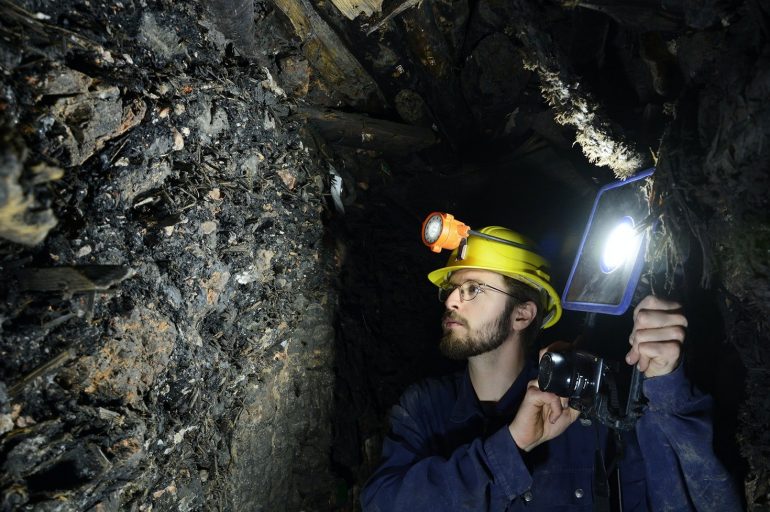Food produced by fermentation was surprisingly early on the menus of miners at the ancient Hallstatt salt mine in Austria, researchers report: in “little shops” dating back about 2,700 years they found traces of some sort of mushroom that apparently served blue cheese and beer. had come from. . The team also reports interesting insights into the composition of the intestinal flora of a miner from the Baroque period.
Salt has been mined here for thousands of years: the prehistoric salt mine of Hallstatt is the oldest salt mine in the world still in operation. The high salt concentration in the tunnels and the constant temperature of eight °C have made them a treasure trove for archaeology: in the shafts, exceptionally well-preserved objects such as textiles or tools from different times were discovered.
The researchers, led by Frank Maxner of the Bolzano research center Eurac Research, now focused on traces of former workers, which at first glance don’t look like archaeological treasures – but they are: almost perfectly preserved human feces. As part of his studies, he examined samples from different eras using microscopic as well as genetic and biochemical analysis methods. “They still include the human genome, as well as DNA from intestinal bacteria, as well as proteins and parts of food,” explains Maxner.
Blue Cheese and Beer
As the scientists report, a fossilized fecal specimen, dated to about 2700 years old, provided the most exciting results: in it they found clear traces of two types of fungi: Penicillium roquefortii and Saccharomyces cerevisiae. As the researchers point out, they apparently came from the foods they fermented. Specifically, Penicillium rocforti is a type of mushroom that is still used to make blue cheese today. Saccharomyces cerevisiae, in turn, is known as brewer’s yeast. In their analyses, the scientists also found clear indications that these specific mushroom types were not only used by chance, but were specifically bred and used for production.
Old references to fermented milk products and beverages were discovered in the Middle East and Ancient Egypt. Little is known about the history of the spread of cheese and beer in Europe. Scientists are now providing direct molecular evidence that complex foods played a greater role in the Iron Age than ever before. “It is becoming increasingly clear that prehistoric culinary practices were not only highly developed, but that complex processed foods and fermentation techniques also played a major role in our early nutritional history,” summarizes senior author Kerstin Kovrik.
Rich heritage in Kharij
In addition, microscopic and molecular examinations of the samples showed that for nearly 3,000 years the diet of miners was characterized by a diet rich in fiber and carbohydrates – protein from beans and sometimes supplemented by fruits, nuts or animal matter. As far as the characteristics of the intestinal flora are concerned, the researchers point out significant differences from today’s patterns. Interestingly, this also applies to the most recent samples analyzed: although investigations have shown that miners of the Baroque period were already consuming grains in a more processed form – more finely ground – bronze or was common in the Iron Age. Researchers report that the microbiome in today’s industrialized society is much older than that of humans.
“If people 300 years ago had a microbiome similar to that of their ancestors thousands of years ago, that would mean major changes would happen in a relatively short period of time,” Maxner says. The impoverishment of the microbiome through the lifestyles of Western industrial societies has been classified as an important factor in relation to many diseases – but many aspects are still not understood.
“This is one of the reasons why the studies at Hallstatt are of so much topical interest,” says co-author Albert Zink of Eurac Research. The researchers now want to continue their search for clues into old small business: In ongoing and future studies, they will learn more about the early production of fermented foods and the interactions between nutrition and the intestinal microbiome at different times. hope to know.
Source: SAIL Press, Yurak Research, Technical Articles: Current Biology, doi: 10.1016/j.cub.2021.09.031

Web guru. Amateur thinker. Unapologetic problem solver. Zombie expert. Hipster-friendly travel geek. Social mediaholic.





